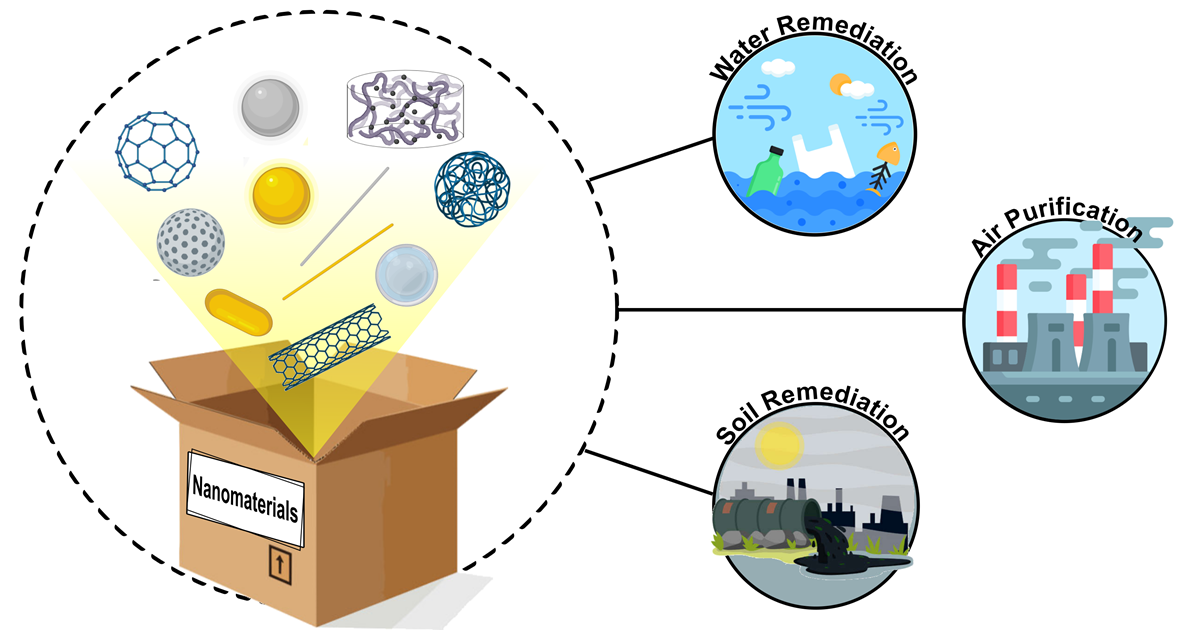Nanoscale Solutions: Transformative Applications of Functionalized Nanomaterials in Environmental Remediation
A special issue of Applied Nano (ISSN 2673-3501).
Deadline for manuscript submissions: closed (20 May 2025) | Viewed by 14724

Special Issue Editors
Interests: noble metal nanostructures; metal oxide nanoparticles; polymeric nanomaterials; nanostructured hybrid materials; nanomaterials synthesis and characterization; organometallic complexes; surface functionalization; nanomaterial applications
Special Issues, Collections and Topics in MDPI journals
Interests: nanomaterials; metal nanoparticles; metal oxide nanoparticles; polymers; nanostructured polymeric materials; hybrid nanostructures; organometallic complexes; nanomaterials synthesis and characterization; nanomaterial applications
Special Issues, Collections and Topics in MDPI journals
Special Issue Information
Dear Colleagues,
We are currently facing critical global challenges involving water contamination and soil and air pollution, which present extreme environmental and human health risks. Besides conventional methods for remediation (thermal treatment, pump-and-treat, chemical oxidation, etc.), nanoremediation presents promising applications due to its efficacy and cost-effectiveness.
This Special Issue explores cutting-edge developments at the intersection of nanotechnology and environmental science. This collection will highlight the innovative use of functionalized nanomaterials for tackling environmental challenges, offering insights into the design, synthesis, and application of nanoscale solutions. Research articles and reviews concerning the use of soft and hard functionalized nanomaterials (covalent and non-covalent), such as natural or synthetic polymers, inorganic nanoparticles (metal and metal oxide nanoparticles), carbon-based nanomaterials, and related nanocomposites for environmental remediation, are highly encouraged. The focus will extend across diverse areas, such as water purification and wastewater treatment, air quality improvement, and soil remediation, showcasing the versatility and efficacy of functionalized nanomaterials in addressing complex environmental issues. Through in-depth analyses and case studies, this Special Issue seeks to advance our understanding of the transformative potential of nanotechnology in creating sustainable solutions for a cleaner and healthier environment.
Dr. Sara Cerra
Dr. Ilaria Fratoddi
Guest Editors
Manuscript Submission Information
Manuscripts should be submitted online at www.mdpi.com by registering and logging in to this website. Once you are registered, click here to go to the submission form. Manuscripts can be submitted until the deadline. All submissions that pass pre-check are peer-reviewed. Accepted papers will be published continuously in the journal (as soon as accepted) and will be listed together on the special issue website. Research articles, review articles as well as short communications are invited. For planned papers, a title and short abstract (about 100 words) can be sent to the Editorial Office for announcement on this website.
Submitted manuscripts should not have been published previously, nor be under consideration for publication elsewhere (except conference proceedings papers). All manuscripts are thoroughly refereed through a single-blind peer-review process. A guide for authors and other relevant information for submission of manuscripts is available on the Instructions for Authors page. Applied Nano is an international peer-reviewed open access quarterly journal published by MDPI.
Please visit the Instructions for Authors page before submitting a manuscript. The Article Processing Charge (APC) for publication in this open access journal is 1000 CHF (Swiss Francs). Submitted papers should be well formatted and use good English. Authors may use MDPI's English editing service prior to publication or during author revisions.
Keywords
- functionalized nanomaterials
- nanoparticles
- nanostructured polymers
- nanocomposites
- environmental remediation
- water remediation
- soil remediation
- air purification
- nanotechnology applications
Benefits of Publishing in a Special Issue
- Ease of navigation: Grouping papers by topic helps scholars navigate broad scope journals more efficiently.
- Greater discoverability: Special Issues support the reach and impact of scientific research. Articles in Special Issues are more discoverable and cited more frequently.
- Expansion of research network: Special Issues facilitate connections among authors, fostering scientific collaborations.
- External promotion: Articles in Special Issues are often promoted through the journal's social media, increasing their visibility.
- Reprint: MDPI Books provides the opportunity to republish successful Special Issues in book format, both online and in print.
Further information on MDPI's Special Issue policies can be found here.





